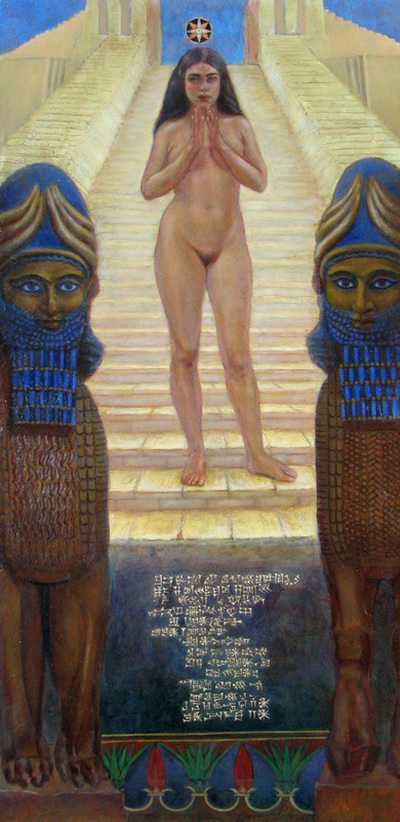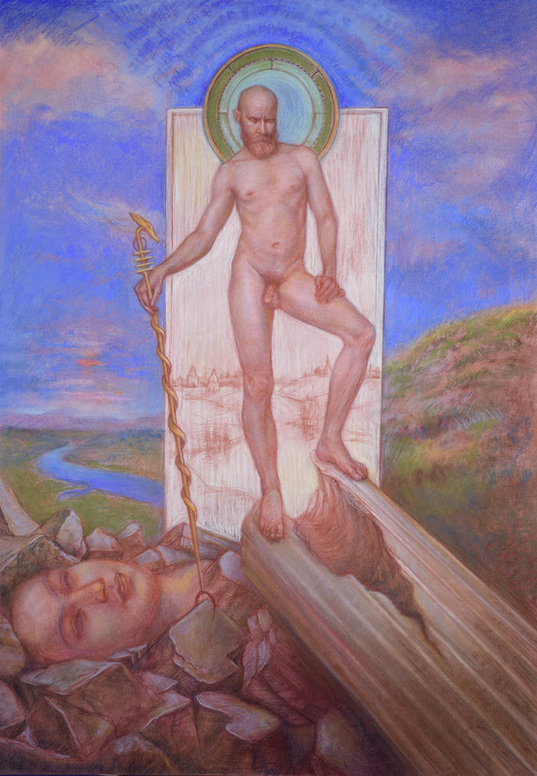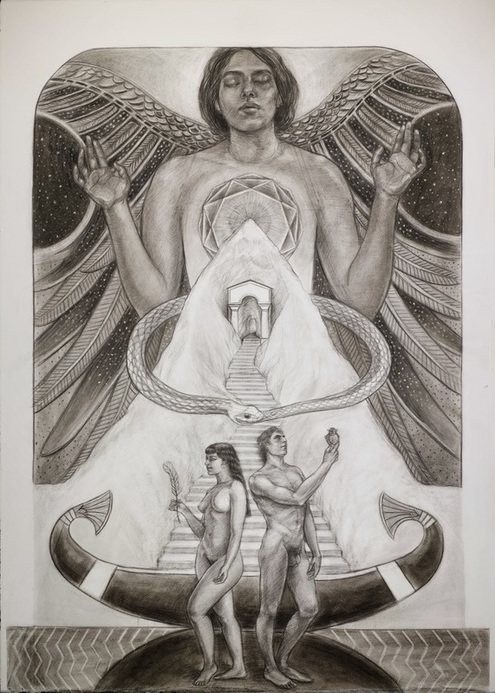CLAUDIA AVILA
Claudia Avila, (b.1976), is a self-taught artist. Originally from Los Angeles, she lived in Iceland for nine years before relocating to Arizona in 2009. The landscapes of these two distinct locales, one of glaciers the other desert, have had an irreversible impact on the direction of her art. Inspired by the sacred and secular aspects of human experience, she balances observation and invention with artistic will.
Enheduanna. Oil on linen; 91.4 x 45.7 cm (36″ x 18″).
Animus. Pastel on Rives BFK paper; 105.4 x 74.9 cm (41.5" x 29.5").
Anabasis. Charcoal on Rives BFK paper; 106.6 x 74.9 cm (42″ x 29.5″).
The Mountain of Initiation, in this rendition, is the locus of incubation. Feminine and masculine signifiers, anima and animus, stand on the primordial mound, surrounded by intuitive waters. The female initiate holds Maat’s feather of truth whereas the male holds the Egyptian ib, a symbol of the spiritual heart. These attributes become a testament to the integrity of their quest. The barque will traverse the waters to the shore of the mountain where the protagonists then begin their steep ascent. Encircling the mountain is the ouroboros, threatening a state of pre-individuation or the dissolution of the ego but it is also promising regeneration. Beyond the fear of dissolution, one gains entrance into the mountain. Simple columns superficially flank the entrance to announce that all constructs abandon themselves to the throat of the cave. In the bowels of the mountain, each initiate dissolves, incubates, and then coalesces into the hermaphrodite. At the center of the hermaphrodite’s chest radiates a diamond hexadecagon, alluding to the beauty of balanced unity. A subtle nimbus signifies the convergence of accomplished inner light and the irradiation from the realm of noetic archetypes. The ocelli on the wings have become portals through which celestial light flows down to remind one that even in the transcendent state one maintains a duty to the mundane world.


